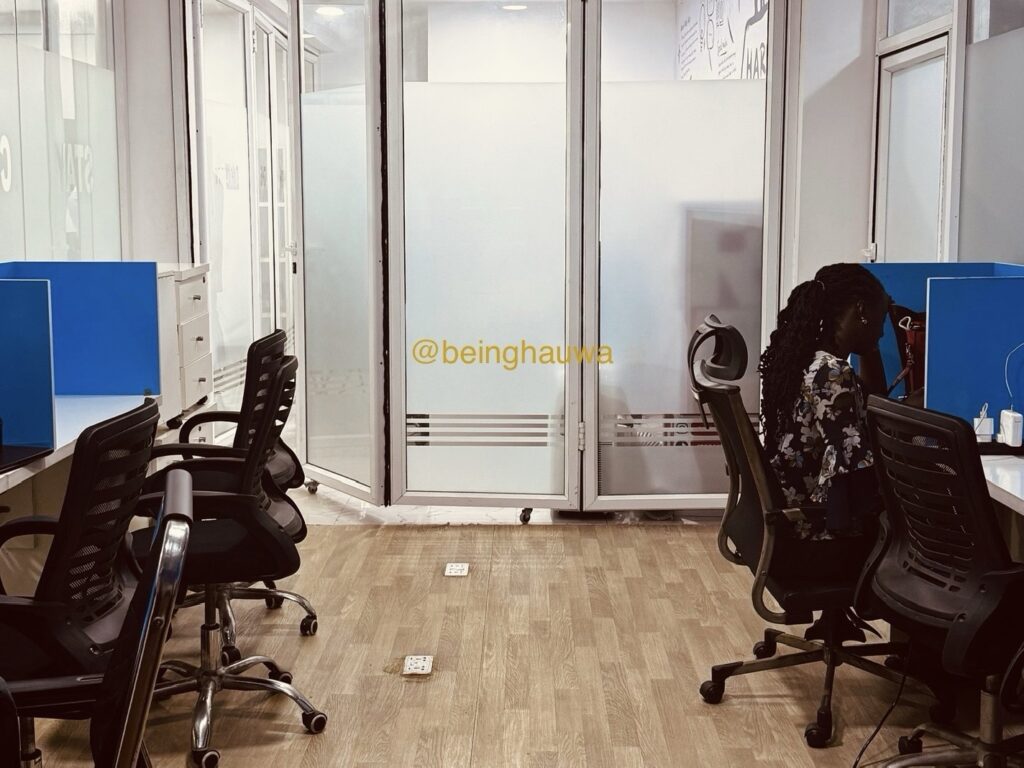Your cart is currently empty!
Introduction: The New Reality of Remote Work and the Focus Crisis
The global shift to remote work has delivered unparalleled flexibility, but it has simultaneously unleashed a silent productivity killer: digital distraction. In the physical office, the forces of proximity and culture provided a natural barrier against the most acute forms of distraction. At home, however, the line between your professional life and the entire digital world has dissolved, leaving your focus vulnerable to a constant barrage of pings, notifications, and the siren call of the internet.
This is the age of the attention economy, where platforms and applications are expertly engineered to hijack your focus for profit. For the remote knowledge worker, this environment is a perfect storm. The ability to perform Deep Work, a term coined by Georgetown professor Cal Newport as “professional activities performed in a state of distraction free concentration that push your cognitive capabilities to their limit is no longer just a productivity hack; it is the single most valuable skill in the 21st-century economy.
This comprehensive guide is dedicated to arming the remote professional with the philosophies, rituals, and practical strategies needed to systematically eliminate digital distractions and cultivate a sustainable, high-leverage deep work practice. If your goal is to move from perpetually busy to genuinely productive, this is your blueprint.

Mastering the Mindset—The Philosophy of Deep Work
Before implementing any tools or routines, a fundamental shift in mindset is required. Deep Work is not a task; it is a philosophy that redefines how you view your time, attention, and professional output.
1. Differentiating Between Deep Work and Shallow Work
The first step is a rigorous audit of your activities. You must clearly distinguish between:
- Deep Work: Cognitively demanding, high-value tasks that improve your skills, create new value, and are hard to replicate (e.g., writing a complex report, coding a new feature, strategizing a campaign).
- Shallow Work: Non-cognitively demanding, logistical tasks often performed while distracted (e.g., routine email responses, basic data entry, scheduling meetings).
For remote workers, shallow work is amplified by digital communication tools like Slack and email. It is easy to spend an entire day feeling productive by responding to messages, yet achieving nothing of lasting value. Schedule your time around deep work, and confine shallow work to its own, dedicated blocks.
2. Choosing Your Deep Work Philosophy
Cal Newport outlines four distinct strategies for integrating Deep Work into your life. As a remote worker, you have the flexibility to choose and adapt the model that best suits your work structure, team requirements, and personal energy levels.
A. The Rhythmic Philosophy (The Habit Builder)
This is the most accessible for remote workers. It involves setting aside the same block of time each day for deep work (e.g., 9:00 AM to 12:00 PM). This regularity turns focus into an automatic habit, minimizing the willpower needed to start. This works best when your team can respect a consistent “Do Not Disturb” block.
B. The Bimodal Philosophy (The Time Box Specialist)
This approach divides your time into long stretches of dedicated deep work (e.g., a full week or multiple days) and shallow work. A remote content creator, for instance, might dedicate Monday and Tuesday to deep writing and research, leaving Wednesday through Friday for meetings, emails, and administrative tasks. This requires strong self-discipline and explicit boundary setting with your remote team.
C. The Journalistic Philosophy (The Opportunist)
The most advanced philosophy, this is for those with unpredictable schedules. It involves seizing any unexpected block of free time (a cancelled meeting, a brief lull) and immediately shifting into deep work mode. This requires a highly developed “focus muscle” and the ability to transition instantly, making it unsuitable for beginners.
D. The Monastic Philosophy (The Digital Hermit)
This radical approach involves completely eliminating or heavily restricting all shallow obligations and digital connections for long periods. While rarely sustainable for full-time remote employees, it can be applied in shorter Grand Gestures, booking a secluded Airbnb for a weekend to finish a major project, or taking a company-sanctioned Focus Week.

Architecting a Distraction Proof Digital and Physical Environment
The home office is a battleground where focus is perpetually under siege. Your environment, both physical and digital must be meticulously engineered to support sustained concentration.
3. Creating a Physically Uncluttered Sanctuary
The principles of Deep Work extend beyond the computer screen. A cluttered desk is a cluttered mind.
- Dedicated Workspace: Treat your remote workspace like a professional office. A designated room with a closing door is ideal. If that is not possible, a specific corner or desk that is only used for work helps create a powerful psychological barrier.
- The “Clear-to-Neutral” Principle: Adopt a simple ritual at the end of each workday to “clear to neutral.” Tidy your desk, put away non-essential items, close all unneeded programs, and set up your space for the next day’s first deep work task. This lowers the start-up friction for your next session.
- Acoustic Control: Invest in high-quality noise-cancelling headphones. These are a remote worker’s most vital tool, signalling to your brain (and potentially household members) that you are unreachable and effectively blocking out ambient noise. Complement this with focus enhancing soundscapes (white noise, classical, or binaural beats).
4. Implementing Digital Defenses and Communication Boundaries
Digital tools are the primary conduit for shallow work and distraction. To protect your attention, you must become a conscious gatekeeper of your digital devices.
- The Single-Task Screen: When entering a deep work session, close every single application, browser tab, and document that is not absolutely essential for the task at hand. Use a dedicated window management tool or virtual desktop to enforce this.
- Aggressive Notification Cull: Disable all non-essential notifications on your computer and phone. This includes desktop pop-ups, sounds, and badge icons. A great rule of thumb: If a notification is not a life-or-death emergency, it is a distraction.
- Strategic App and Website Blocking: Utilize browser extensions (like Freedom or Cold Turkey) to temporarily block access to known time-wasting sites (social media, news, non-work email) during your scheduled deep work blocks. This is a crucial defense against the temptation to “just check one thing.”
- The Phone as a Distraction Object: Your smartphone is a weapon against your focus. During deep work, physically remove it from your line of sight. Put it in another room, in a drawer, or a phone box. The moment a distraction impulse strikes, having to walk to retrieve the phone often provides enough time for rational thought to prevail.

Building the Deep Work Rituals for Sustainable Focus
Deep Work is a skill that must be trained. You cannot simply decide to focus for eight hours. It requires structured rituals and intentional practice to expand your focus muscle.
5. Time Blocking: The Backbone of Your Day
The most powerful tool for protecting your deep work time is Time Blocking. This means scheduling every minute of your workday in advance, dedicating specific blocks for specific tasks. This is why I love using the 2025 full focus digital planner, it was designed for creating time blocks.
- The Nightly/Morning Planning Ritual: Before you finish work or first thing in the morning, map out your entire day in a calendar or planner. Assign an estimated time block to every task, including breaks, emails, and meetings.
- The Deep Work Anchor: Start your day with your most cognitively demanding task. your Deep Work Anchor. This is your most important task (MIT). By completing it first, you ensure your highest-leverage work is done while your willpower and energy are at their peak, setting a positive tone for the rest of the day.
- Scheduled Slack/Email Blocks: Adopt the Batching principle for communication. Instead of living in your inbox, check and respond to email and internal chat (Slack/Teams) only during 2-3 designated time blocks per day (e.g., 11:30 AM and 4:30 PM). Communicate these hours to your team and set your status to “Focusing” outside of those times.

6. The Power of Intentional Breaks and Productive Meditation
Sustained focus is metabolically expensive. To maximize deep work, you must maximize quality rest.
- The Pomodoro Technique Refined: While the standard 25-minute Pomodoro is a good start, aim to expand your focus tolerance. Work in longer, uninterrupted blocks of 60 to 90 minutes, followed by a 10-15 minute break. As your focus muscle strengthens, gradually increase the work time.
- Avoid Digital Breaks: Crucially, your breaks must not be shallow work or digital entertainment. Scrolling social media or checking news feeds simply replaces one form of digital distraction with another, failing to truly restore your cognitive resources.
- Productive Meditation: Use walking, stretching, or light chores as a form of productive meditation. During these breaks, deliberately and lightly focus on a work problem without distraction, allowing your subconscious mind to process it. This mimics the environment that allows for true aha! moments.
7. Strategic Retreat from the Information Overload
The modern remote environment often leads to an Any Benefit Mindset towards new technology and information. If a tool or information source provides any possible benefit, we adopt it. Deep Work requires a Craftsman Mindset.
- Ruthlessly Prune Tools: Evaluate all the digital communication tools your remote team uses (Slack, Teams, Email, Project Management, Video Conferencing). If a tool does not contribute significantly to your deep work output, advocate for its minimal use or elimination. Every new channel is a potential source of distraction.
- Quit Social Media (The Optionality Test): Ask yourself this question: “Would the last 30 days have been notably better if I had been able to use this social media service?” For most professionals, the answer is a resounding no. If the cost (attention and time) outweighs the benefit (fleeting entertainment), cut it out completely, or confine its use to a dedicated personal device far away from your workspace.
- Guard Your Mental Resources: Be judicious about the amount of non-essential information you consume, whether through news sites, podcasts, or streaming services. The constant consumption of new information trains your mind to crave novelty and switch focus frequently, which directly undermines your ability to focus deeply on your work.

Remote Team Dynamics and Culture of Focus
For remote Deep Work to thrive, the entire team environment must support it. A lone deep worker is often overwhelmed by a shallow-work culture.
8. Setting Asynchronous Communication Norms
Instant communication is the enemy of deep work. Remote teams must prioritize asynchronous communication, responding when you are ready, not immediately.
- The “Urgent” Protocol: Establish a clear team protocol for what constitutes a true emergency that warrants an instant message, phone call, or text. Everything else should be sent via email or a non-interrupting channel like a project management comment.
- Leverage Status Messages: Encourage your team to use clear status messages (e.g., “Deep Work – Back at 12 PM,” “Focus Time – Only call if urgent”) on Slack/Teams and block out “Focus Time” on shared calendars. This establishes visible, respectful boundaries.
- Default to Asynchronous: Make the default communication method text-based and asynchronous. This forces people to be more thoughtful and detailed in their requests, reducing the back-and-forth interruptions that fragment focus.
9. Replacing Meetings with Action-Oriented Alternatives
Meetings are often the biggest time sinks and deep work disruptors in the remote environment.
- The Default-No Rule: Treat meetings as a last resort. Before scheduling one, ask: “Can this be solved with a detailed document, a simple poll, or a quick, focused asynchronous video update?”
- Meeting-Free Days: Advocate for a full Meeting-Free Day each week (e.g., Deep Work Fridays). This gives the entire team an expected, uninterrupted block of time for high-leverage tasks.
- Time Box and Agendas: For essential meetings, enforce a strict time limit and a clear, pre-published agenda with explicit outcomes. This respects everyone’s time and prevents the meeting from bleeding into scheduled deep work blocks.

Conclusion: The Path to Meaningful Remote Productivity
The digital landscape is inherently hostile to focus. As a remote worker, you possess both the biggest advantage and the biggest vulnerability. The advantage is the freedom to design your work life; the vulnerability is the lack of physical guardrails.
By embracing the philosophy of Deep Work, by consciously architecting a distraction-proof environment, and by building rigorous rituals around your time, you are doing more than just being productive. You are reclaiming autonomy over your attention, cultivating a highly valuable skill, and ultimately, producing the best work of your career.
The journey to Deep Work is not about working harder. It is about working smarter, deeper, and with unwavering intent. Start today by choosing your first deep work anchor and silencing your first notification. Your most valuable output is waiting on the other side of the digital noise.



Leave a Reply